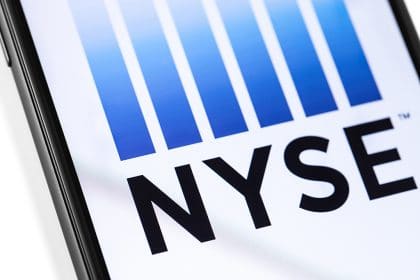Today in the pre-market, the stocks of China Telecom Corporation Limited (NYSE: CHA), China Mobile Network (NYSE: CHL) and China Unicom Ltd (NYSE: CHU) are in the green.
The New York Stock Exchange (NYSE) has announced that it will no longer delist three Chinese telecom giants after earlier reports in December of the last year where it originally planned to drop the telcos in order to comply with an executive order.
In a statement released on January 5, the NYSE revealed that they have dropped plans to delist the Chinese telecom giants after additional consultation with relevant “regulatory authorities” in connection with Office of Foreign Assets Control FAQ 857.
The three issuers or Chinese telecom giants, China Telecom Corporation Limited (NYSE: CHA), China Mobile Network (NYSE: CHL) and China Unicom Ltd (NYSE: CHU) currently will continue to be listed and traded on the NYSE.
The three Chinese Telecom Giants, which all have dual listings, saw their shares surge on the Hong Kong stock market, after plans to delist them from the US exchange came to a halt. After a few tough sessions in both Hong Kong and New York, the shares looked to have bounced back as China Telecom Corporation Limited saw an 8% rise, with its counterparts, China Unicom Limited and China Mobile Network seeing gains of 8.8% and 7% respectively. In the pre-market today, CHU stock is 14.55% up, CHL stock is 10.57% up and CHA stock is rising by 10.94%.
The NYSE’s decision has been described by some analysts as “bizarre”. And now investors are left wondering what really transpired within the exchange after the executive order from President Donald Trump. Reports suggest the order had more to do with wider and complicated geopolitical implications while others suggest the exchange might have misinterpreted the initial executive order.
The NYSE has however not dismissed any chance of revisiting the decision stating that it will continue to weigh up the applicability of the executive order 13959 from President Trump to the three Chinese Telecom Giants and their continued listing status.
Stock index giants including FTSE Russell, MSCI, S&P Dow Jones indices all announced last month that they were going to delist some Chinese stocks from equity gauges in a bid to comply with last year’s Presidential executive order.
Although all the three Chinese telecom giants are equipped with a dual listing in the US and Hong Kong and earn all of their revenues outside the US, the stakes are high for both the Chinese and US economies.
There are currently over 200 Chinese companies listed on US stock markets and these companies have raised not less than $144 billion in capital over the past 20 years, alongside their $2.2 total trillion market capitalization. The US will also look to avoid any decision which can escalate tensions that can affect their access to the huge market that the Chinese provide for their goods.
A statement released by the China Securities Regulatory Commission on January 4, stated that the executive order from President Trump last year was solely based on political purposes and had absolutely nothing to do with the “actual situations of relevant companies and the legitimate rights of the global investors, and severely damaged market rule and order.”
next